Memory Consolidation: How Stress Develops After Exposure To A Traumatic Event And What Can Be Done to Reduce It
Within a 72-hour time window of the event: 20+ minutes game play
Prefaced by recall of disturbing images from the event
Attention paid to rotational interactions (mental rotation)
Result: preventing intrusive memories of the event
In the hours immediately following exposure to a traumatic event, memory consolidation, including imagery and associated emotional learning occurs. These can harden into intrusive memories, primarily images, but also as smells, sounds, other sensations, that later progress and trigger distress. On a continuum, subsequent distress ranges from mild but upsetting levels, through “subthreshold posttraumatic stress disorder” features affecting social/work spheres and suicidality (Zlotnick et al., 2002) all the way to full-blown acute and posttraumatic stress disorders.
A growing body of research (James et al., 2015; Kessler et al., 2018; Kessler et al., 2019a; Kessler et al., 2019b; Iyadurai et al., 2019; Kanstrup et al., 2021; Thorarinsdottir et al. 2022; Singh et al., 2022) is showing that targeting and preventing the early formation of intrusive memories immediately after exposure to a traumatic event, using principles derived from memory consolidation studies, can significantly reduce distress and its progression, “nipping it in the bud.”
(1) 20+ minutes of game play (2) including visuospatial mental rotation exercises (rotating pieces in one’s mind as preparation for matching or moving them where needed by game rules), (3) within a time window of 72 hours or less, (4) targeting event hotspots (Gray & Holmes, 2008), can (5) reduce intrusive memories of disturbing imagery.
As mentioned above, this approach targets a critical element, intrusive memories, implicated in subsequent development of disturbing levels of stress following exposure to a traumatic event. Most often experienced as images, these can also be sounds, smells, other triggering sensations. Intrusive memories can be experienced within current reality: they intrude as recall of a past, not current event. A subset of intrusive memories, flashbacks, dissociative experiences during which the person feels like they are reliving the events at the time they occurred, can blur this past-present time distinction.
The game Tetris used in these research studies includes the needed visuospatial animation exercises. Before engaging in the game play, a critical element is for the user to recall hotspots, disturbing images from the event. They are instructed to focus on the mental rotation of game pieces, a critically necessary component. Then, play for a minimum of 10 minutes, plus additional game play totaling 20+ minutes, within the 72-hour time window. Booster sessions following the same protocol while optional (Kanstrup et al., 2021), in our opinion are useful: in our adaptation of the protocol, the “+” in “20+ minutes”.
Other game animations which include visuospatial/rotation interaction, including explicit instructions to focus on mental rotation of pieces, can be used since the goal is for the user to experience the type of interactions, including the key element of mental rotation, shown to prevent subsequent intrusive memories.
Based on game animations that do not produce positive results consistent with recent research (James et al., 2015; Asselbergs et al., 2018), we hypothesize that their design may not sufficiently draw user attention to the mental rotation component. This must be explicit in the instructions delivered to users (Singh, 2022). “Critically [emphasis added], participants were asked to ‘try to work out in your mind’s eye where best to place and rotate these [Tetris] blocks in order to make as many complete horizontal lines as you can and get the best score’ (Lau-Zhu et al., 2017). “The emphasis on mental rotation is key to ensure that the visuospatial demand of Tetris gameplay is maximised, as greater visuospatial demand has been associated with fewer subsequent intrusive memories…” (Kanstrup et al., 2020). Greater visuospatial demand is also strengthened by offering a preview of the next mental rotation task which can split the user’s attention between the main task and the next task.
Another type of research result similarly demonstrated less frequency of intrusive memories but not reduced intensity. This research design using Tetris raised the question whether reducing the frequency of intrusive memories, which was demonstrated in this and other studies, is as helpful as reducing their intensity. Intensity, not measured in other studies, was measured in this study and did not occur. The research study’s authors also noted study limitations including differences between their sample population, who were exposed to a trauma film (see James, et al., 2016), and sample populations in other studies who were exposed to real-life trauma events (Badawi, et al., 2022).
A research study done to determine if “proactive” playing of a game animation, prior to exposure to a trauma event (film), is helpful reported the following: there were no differences in intrusive memory frequencies between a control group and the group using the intervention (James et al., 2016b). It appears that cognitive inoculation prior to event exposure does not produce positive results.
While there is emerging research evidence for the efficacy of the approach delivered in the time-window following an event, that includes explicit attention by subjects to mental rotation, more research is needed to conclusively demonstrate usefulness, as well as better determine which features need to be included/maximized to achieve the best results. With this in mind, as well as the adage that the ‘perfect need not be the enemy of the good,’ and overall safety of the strategies when used following protocols, the game animations are available to potential users who are encouraged to weigh the pro’s and con’s of utilizing them.
A game animation, Rotating Squares/Polyominoes, with exercises designed around mental rotation, is included here and can be self-administered following our adapted protocol. Options include timers to advance the screen if a choice is not timely and a preview of the next rotational task to strengthen the split attention component.


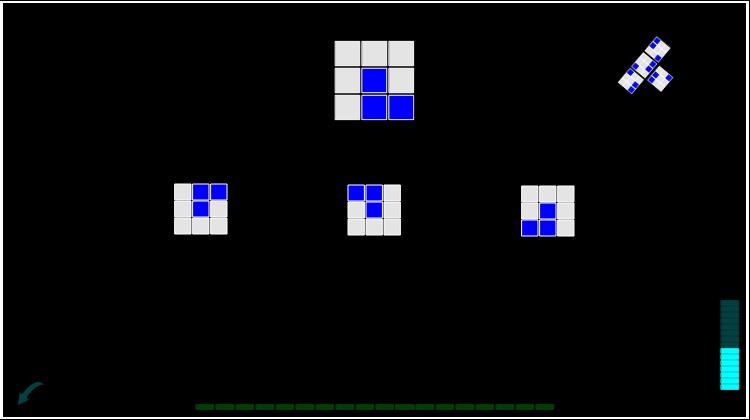
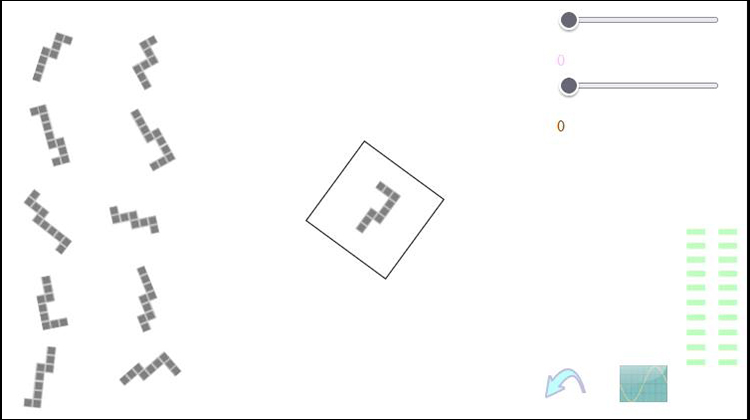
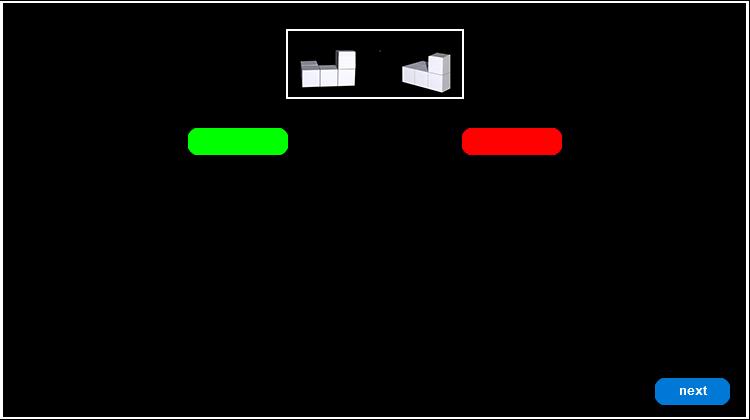
Additional visuospatial animations, based on Untangle/Planarity, Match 3, Connect Pipes, Tilting Maze games, designed to achieve the same effect using mental rotation, are included here and here and here and here. These can be mixed within the 72-hour time window as long as the first game play is 10 minutes and total game play is 20+ minutes.
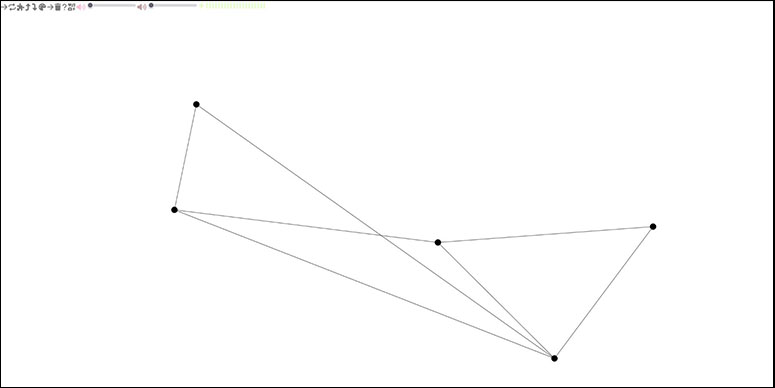
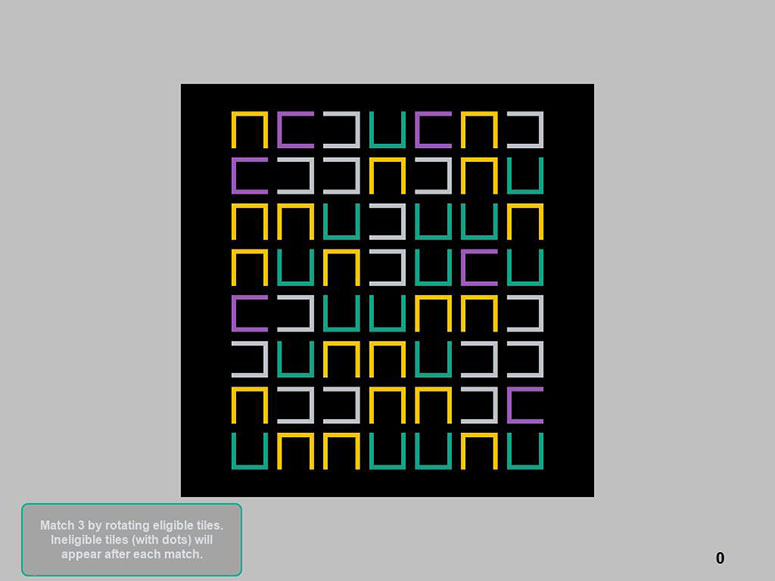
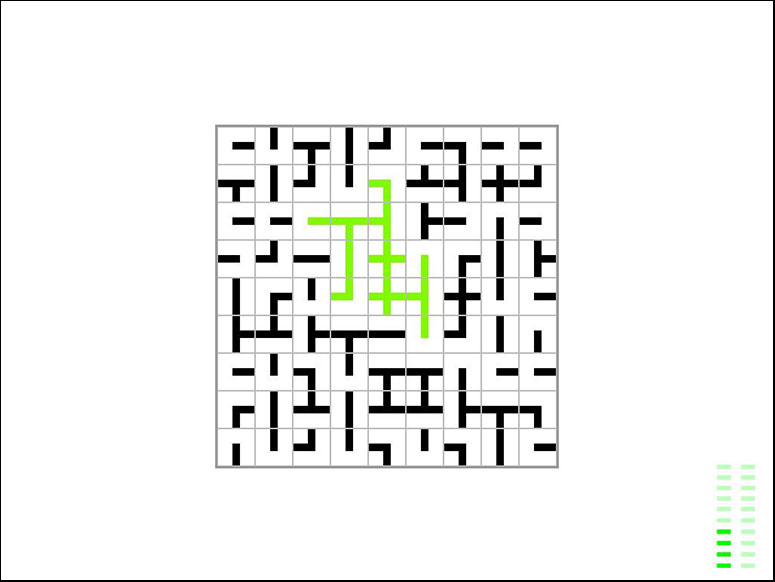
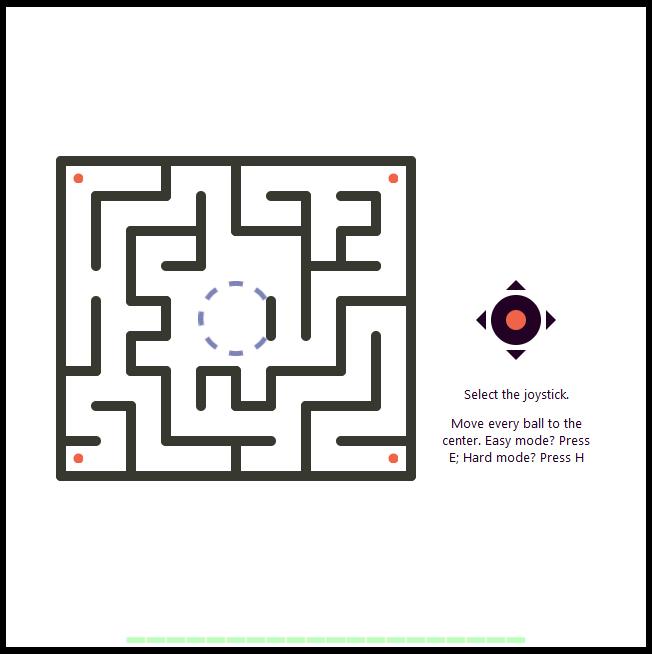
After the 72-hour event-exposure time window (the time during which memory consolidation occurs), disturbing effects of acute or posttraumatic stress, if experienced, can be reduced through activating memory reconsolidation.
References
Asselbergs, J., Sijbrandij, M., Hoogendoorn, E., Cuijpers, P., Olie, L., Oved, K., Merkies, J., Plooijer, T., Eltink, S., & Riper, H. (2018). Development and testing of TraumaGameplay: An iterative experimental approach using the trauma film paradigm. European Journal of Psychotraumatology, 9(1), Article 1424447. https://doi.org/10.1080/20008198.2018.1424447.
Badawi, A., Berle, D., Rogers, K., & Steel, Z. (2020). Do cognitive tasks reduce intrusive-memory frequency after exposure to analogue trauma? An experimental replication. Clinical Psychological Science, 8(3), 569–583. https://doi.org/10.1177/2167702620906148.
Badawi, A., Steel, Z. & Berle, D. (2022). Visuospatial Working Memory Tasks May Not Reduce the Intensity or Distress of Intrusive Memories. Frontiers in Psychiatry. 13. 10.3389/fpsyt.2022.769957.
Grey N., Holmes E.A. (2008). “Hotspots” in trauma memories in the treatment of post-traumatic stress disorder: A replication. Memory. 2008;16:788–796. [PubMed: 18720224].
Holmes, E. A., James, E. L., Coode-Bate, T., & Deeprose, C. (2009). Can Playing the Computer Game “Tetris” Reduce the Build-Up of Flashbacks for Trauma? A Proposal from Cognitive Science. PLoS ONE 4(1): e4153. https://doi.org/10.1371/journal.pone.0004153.
Holmes, E. A., James, E. L., Kilford, E. J. & Deeprose, C. (2010) Key Steps in Developing a Cognitive Vaccine against Traumatic Flashbacks: Visuospatial Tetris versus Verbal Pub Quiz. PLoS ONE 5(11): e13706. https://doi.org/10.1371/journal.pone.0013706.
Holmes, E. A., James, E. L., Killford, E. J., & Deeprose, C. (2012). Correction: Key Steps in Developing a Cognitive Vaccine against Traumatic Flashbacks: Visuospatial Tetris versus Verbal Pub Quiz. PLOS ONE 7(11): 10.1371/annotation/eba0a0c8-df20-496b-a184-29e30b8d74d0. https://journals.plos.org/plosone/article?id=10.1371/annotation/eba0a0c8-df20-496b-a184-29e30b8d74d0.
Holmes, E. A., Hales, S. A., Young, K., & Di Simplicio, M. (2019). Imagery-based cognitive therapy for bipolar disorder and mood instability. The Guilford Press.
Iyadurai L., Blackwell, S. E., Meiser-Stedman, R., Watson, P. C., Bonsall, M.B., Geddes, J, R., De Ozorio Nobre, A. C. & Holmes, E. A. (2017). Preventing Intrusive Memories after Trauma via a Brief Intervention Involving Tetris Computer Game Play in the Emergency Department: A Proof-of-Concept Randomized Controlled Trial. Mol Psychiatry. 2017 Mar 28.
Iyadurai, L. et al. (2019). Intrusive memories of trauma: a target for research bridging
cognitive science and its clinical application. Clin. Psychol. Rev. 69, 67–82
(2019).
James, E. L., Bonsall, M. B., Hoppitt, L., Tunbridge, E. M., Geddes, J. R., Milton, A. L., & Holmes, E. A. (2015). Computer Game Play Reduces Intrusive Memories of Experimental Trauma via Reconsolidation-Update Mechanisms. Psychological science, 26(8), 1201–1215. https://doi.org/10.1177/0956797615583071.
James, E. L., Lau-Zhu, A., Clark, I. A., Visser, R. M., Hagenaars, M. A., & Holmes, E. A. (2016a). The trauma film paradigm as an experimental psychopathology model of psychological trauma: Intrusive memories and beyond. Clinical Psychology Review, 47, 106–142. https://doi.org/10.1016/j.cpr.2016.04.010
James, E. L., Lau-Zhu, A., Tickle, H., Horsch, A., & Holmes, E. A. (2016b). Playing the computer game tetris prior to viewing traumatic film material and subsequent intrusive memories: Examining proactive interference. Journal of Behavior Therapy and Experimental Psychiatry, 53, 25–33. https://doi.org/10.1016/j.jbtep.2015.11.004
Kanstrup, M., Kontio, E., Geranmayeh, A., Olofsdotter Lauri, K., Moulds, M. L., & Holmes,
E. A. (2020). A single case series using visuospatial task interference to reduce the
number of visual intrusive memories of trauma with refugees. Clinical Psychology &
Psychotherapy, 28(1), 109-123. https://doi.org/10.1002/cpp.2489.
Kanstrup, M., Singh, L., Göransson, K.E. et al. (2021). Reducing intrusive memories after trauma via a brief cognitive task intervention in the hospital emergency department: an exploratory pilot randomised controlled trial. Transl Psychiatry 11, 30 (2021). https://doi.org/10.1038/s41398-020-01124-6.
Kessler, H., Holmes, E. A., Blackwell, S. E., Schmidt, A.-C., Schweer, J. M., Bücker, A., Herpertz, S., Axmacher, N., & Kehyayan, A. (2018). Reducing intrusive memories of trauma using a visuospatial interference intervention with inpatients with posttraumatic stress disorder (PTSD). Journal of Consulting and Clinical Psychology, 86(12), 1076–1090. https://doi.org/10.1037/ccp0000340
Kessler, H., Schmidt, A.-C., James, E.L., Blackwell, S.E., von Rauchhaupt, M., Harren, K., Kehyayan, A., Clark, I.A., Sauvage, M., Herpertz, S., Axmacher, N., Holmes, E.A. (2019a). Visuospatial computer game play after memory reactivation delivered three days after a traumatic film reduces the number of intrusive memories of the experimental trauma, Journal of Behavior Therapy and Experimental Psychiatry (2019), doi: https://doi.org/10.1016/j.jbtep.2019.01.006.
Kessler, H., Dangellia, L., Kessler, R., Mahnke, V., Herpertz, S., & Kehyayan, A. (2019b). Mobilum-a new mobile app to engage visuospatial processing for the reduction of intrusive visual memories. mHealth, 5, 49. https://doi.org/10.21037/mhealth.2019.09.15.
Lau-Zhu, A., Holmes, E.A., Butterfield, S., Holmes, J. (2017). Selective Association Between Tetris Game Play and Visuospatial Working Memory: A Preliminary Investigation. Appl Cogn Psychol. 2017 Jul-Aug;31(4):438-445. doi: 10.1002/acp.3339. Epub 2017 Jul 12. PMID: 29540959; PMCID: PMC5836929.
Singh, L., Kanstrup, M., Gamble, B., Geranmayeh, A., Göransson, K.E., Rudman, A., Dahl, O., Lindström, V., Hörberg, A., Holmes, E.A., Moulds, M.L. (2022). A first remotely-delivered guided brief intervention to reduce intrusive memories of psychological trauma for healthcare staff working during the ongoing COVID-19 pandemic: Study protocol for a randomised controlled trial. Contemp Clin Trials Commun. 2022 Apr;26:100884. doi: 10.1016/j.conctc.2022.100884. Epub 2022 Jan 12. PMID: 35036626; PMCID: PMC8752164.
Thirkettle, M., Lewis, J., Langdridge, D., Pike, G. A Mobile App Delivering a Gamified Battery of Cognitive Tests Designed for Repeated Play (OU Brainwave): App Design and Cohort Study. JMIR Serious Games 2018;6(4):e10519. doi: 10.2196/10519
Thorarinsdottir, K., Holmes, E.A., Hardarson, J., Stephenssen, E.S., Jonasdottir, M.H., Kanstrup, M., Singh, L., Hauksdottir, A., Halldorsdottir, T., Gudmundsdottir, B., Thordardottir, E., Valdimarsdottir, U., Bjornsson, A. Using a Brief Mental Imagery Competing Task to Reduce the Number of Intrusive Memories: Exploratory Case Series With Trauma-Exposed Women. JMIR Form Res. 2022 Jul 20;6(7):e37382. doi: 10.2196/37382. PMID: 35857368; PMCID: PMC9491830.
Zlotnick C, Franklin CL, Zimmerman M. (2002). Does “subthreshold” posttraumatic stress disorder have any clinical relevance? Compr Psychiatry. 2002 Nov-Dec;43(6):413-9. doi: 10.1053/comp.2002.35900. PMID: 12439826.
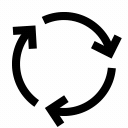